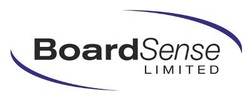In this informative and short article by Jim Finwick president of the Camelot Consulting Group, Jim highlights that innovative non profits prefer action to planning, are willing to pivot and accept that change is the only constant.
Nonprofits often struggle with innovation. It might be they are spending too much time incrementally improving their core offering. But as that thinking infects the organization, they lose perspective and the ability to engage in activities that produce game-changing disruptive shifts.
And then there are others who continue to innovate and grow.
So, what do innovative nonprofits do differently?
(1) They know what they don’t know.
There’s an admission that they don’t know enough about the problem to stand at the white board and articulate an elegant solution. Like Blockbuster, many nonprofits simply can’t imagine the appeal of a Netflix, and they often dismiss things they can’t explain or don’t like. The agile process is an iterative one. It is always testing, always learning and always improving. Learning becomes the essential unit of measure for an innovative nonprofit.
(2) They prefer action to planning.
Using what Eric Reis calls the build, measure, learn feedback loop, innovative nonprofits become experiment factories where the output is validated learning. Success is derived by determining what you intend to learn (at the beginning) and then by building the cheapest experiments to answer those questions the fastest. In this way you close the gap between what you think and what you know as quickly and inexpensively as possible.
It is counterintuitive, but this one aspect of being agile is the core reason why in terms of innovation underfunded nonprofits often have an advantage over larger more established ones. When you have resources, you are tempted to build larger more elaborate ways to answer questions. When you are underfunded, you have no other choice but to find the most direct path to learning.
(3) They are willing to pivot.
Learning produces new insights and new understanding. The agile nonprofit is always willing to adopt the strategy that aligns with what they now know. This is where most established organizations fail at innovation. They project how to execute in the future based on past experience, closing themselves to new thinking, new ways of doing things and new definitions of success.
Worse, the old model is very intoxicating. “We have grown (and continue to grow) using the old method of plan-do-learn.” It is seen as the most responsible way to proceed because it is “well thought out.” Unfortunately, this thinking produces a lot of zombie nonprofits — organizations that are stuck in the land of the living dead without enough forward momentum to grow, but with just enough revenue to keep hope alive.
Changing your strategy for execution requires courage. But it is not a blind leap off a cliff. It is a pivot, a fundamental change to strategy and an educated step in a new direction.
“A pivot is a special kind of structured change designed to test a new fundamental hypothesis about the product, business model, and engine of growth” ~ Eric Ries, The Lean Startup (Crown Business, 2011)
(4) They commit to the pivot when it comes.
When the data speaks, they listen then act. They make the pivot with boldness — even if that means short-term losses. Fear of loss often results in the “missing the pivot” phenomenon for which Blockbuster is now famous. The agile nonprofit determines the success of the pivot based on results and is equally prepared to stay the course in the new direction or to pivot again based on new information. In the end they know they cannot move somewhere new if they cannot follow a trail from here to there. Fear of making a mistake is lessened when an organization knows that if they are heading in the wrong direction all they need to do is pivot again.
(5) They accept that the only constant is change.
Finally, the agile nonprofit creates an organizational culture that realizes that even when it has found the right strategy and the right mission-model fit, things are about to change again. Creating a responsive organization means constructing a stable engine to run the business but also developing a method to continue to adapt the business strategy to respond to changing market conditions.
This methodology may seem better suited to newer organizations led by young, aggressive leaders. However, any organization can adopt an innovation mindset by creating the right culture. The agile nonprofit must think differently about learning, risk and strategy. While they cling tightly to the mission, they must rigorously question the assumptions behind their strategy. Most importantly, they must be willing to pivot away from their original ideas if the evidence leads them to do so. This approach will generate failed ideas, disproven hypotheses and even (gasp!) some financial loss. The upside is an evergreen ministry producing rapid results that come quicker and more often than the traditional long-lead planning cycles to which most organizations adhere. While those traditional methods appear to be safer, they are actually a much riskier approach in the rapidly shifting environment we live in today.


 RSS Feed
RSS Feed
